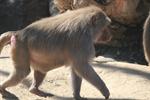
Primatology is the study of primates, specifically referring to analysing their behavioural, historical and medical attempt, whether it is in their natural habitats, in zoos, laboratories, sanctuaries or national parks.
Learn about the different types of primates and how to care for them in captivity or protect them in the wild.